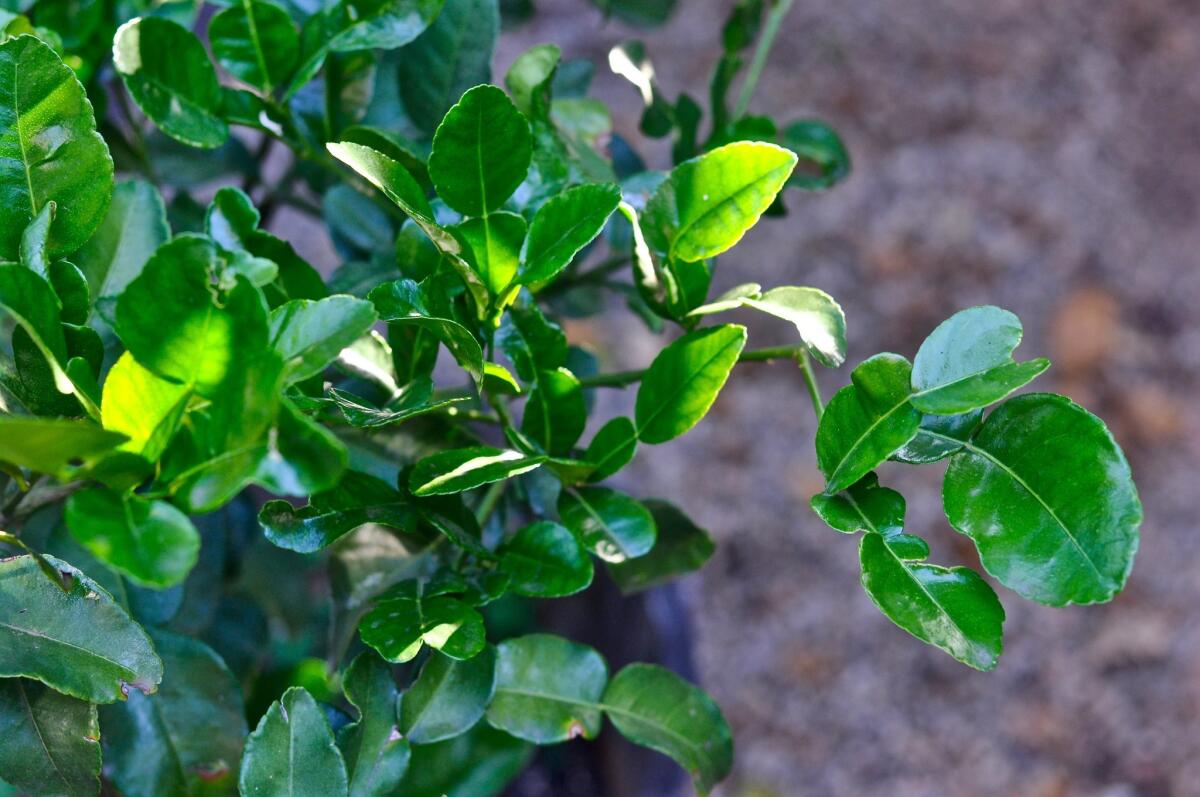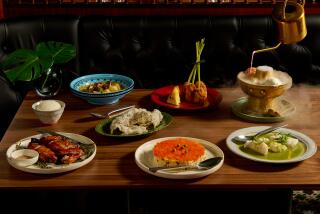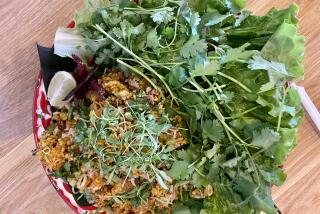What we’re into: Backyard Thai lime trees

A small Thai lime tree, also called a kaffir lime, is potted in a Pasadena backyard.
- Share via
Once upon a time, I got tired of trying to find the deeply aromatic lime leaves used in Thai cooking and asked a guy at my local Orchard Supply Hardware store in Pasadena if they stocked the trees themselves. The double leaves of Thai limes, also called makrut or kaffir (more on that later), are as addictive as the curries they’re found in, and while you can find them at Asian shops and some farmers markets (also on Amazon), you forget them to your culinary peril.
To my utter surprise, the hardware guy nodded, as if I’d just asked for a pot of petunias, and wheeled out three dwarf trees, each for the equally surprising price of about $20. My little lime tree, now taller than my German shepherd, produces intensely fragrant foliage and, sometimes, the fruit itself, weirdly beautiful gnarled orbs that are as deeply green as the leaves.
These leaves, satiny and scented more like citronella than regular limes, are kind of magical, a crucial component in many Thai soups and curries, as well as other Southeast Asian dishes; they’re also, increasingly, used in cocktails and in fruit desserts.
At E.P. & L.P. in West Hollywood, you can order a pot of hot tea brewed with the leaves, a kind of Thai tisane. Jazz Singsanong of Jitlada, the revered Southern Thai restaurant in Hollywood, has been known to hand out leaf-stuffed bags the size of standard pillows to those in need. Read the cookbooks of Yotam Ottolenghi much? You will need Thai lime leaves.
Harder to find than the lime trees, it seems, is the right name for them. Though the botanical term for the plants is Citrus hystrix, they’ve long gone by the name kaffir — which is also considered a slur in some cultures. Noted pomologist David Karp has written that the name means infidel in Arabic, from “kafara,” and can be used as a term of abuse — not what anyone wants for their favorite culinary ingredient.
Thus, we suggest Thai limes, which may be vague, but which gets the point across. Because the semantics of what’s in your backyard matters, as does the semantics of what goes into that gloriously fragrant pot of tom kha gai on your stove.
Because taking pictures of food is almost as much fun as eating it, on Instagram @latimesfood.
ALSO:
Where to get great vegan fro-yo and ice cream
My cookbook collection needs to be slimmed down. But how?
Farmers market report: Fava beans are in season. Here are 9 recipes
More to Read
Eat your way across L.A.
Get our weekly Tasting Notes newsletter for reviews, news and more.
You may occasionally receive promotional content from the Los Angeles Times.











